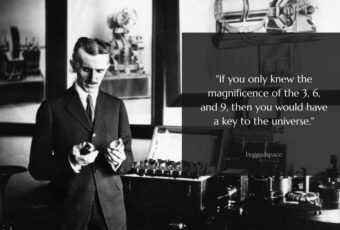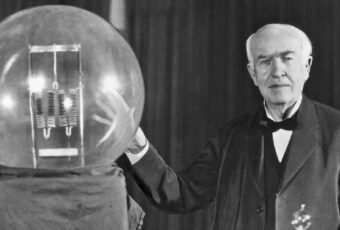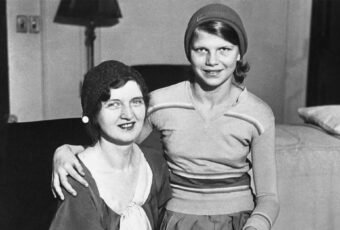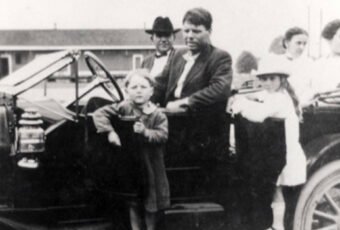Tutankhamun was born around 1341 BCE and was the son of powerful Pharaoh Ankhenaten. Tutankhamun took the throne at eight or nine years of age under the unprecedented viziership of his eventual successor, Ay.
Tutankhamun Facts
After King Tut’s father died in 1334 BCE, two minor kings reigned until Tut took the throne in 1332. Over his eight or nine years of ruling – his chief accomplishment was restoring Egypt back to its polytheistic worship of the god Amun.
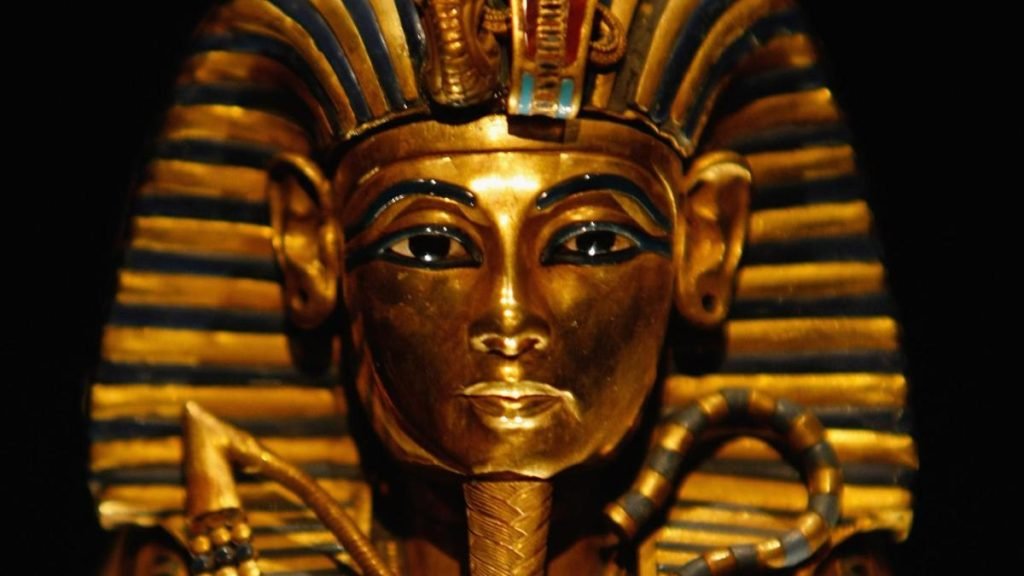
Tut died in 1323 BCE at the age of 19 and was buried in a tomb that was unusually small considering his status. Tut’s death occurred unexpectedly, before the completion of a grander royal tomb. His tomb was forgotten about until it was discovered in 1922 by British researcher Howard Carter. The location of the tomb was lost because it had come to be buried by debris from subsequent tombs, and workers’ houses were built over the tomb entrance.
King Tut Was Physically Disabled
Tutankhamun was physically disabled with a deformity of his left foot along with bone necrosis that required the use of a cane, several of which were found in his tomb as well as body armor and bows. He also had other health issues as well including scoliosis and had contracted several strains of malaria.
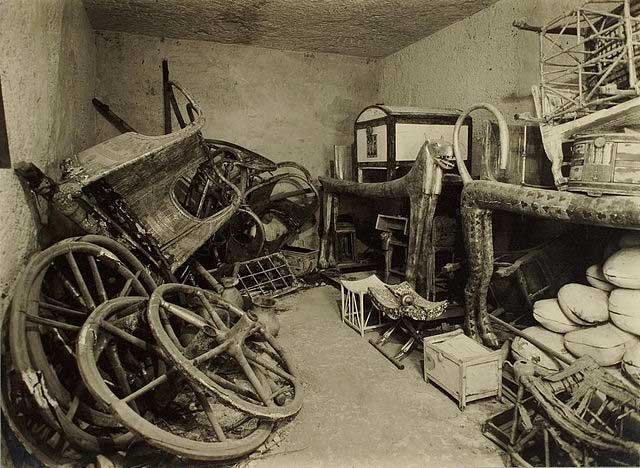
Tut needed help in walking, over 100 walling sticks and canes were discovered in Tutankhmun’s tomb, along with the stick and canes the researches discovered stools – used for shooting – a bow and arrow. It wasn’t until his virtual autopsy that everyone knew about Tut’s disability.
King Tut Had Various Names
Before he became the king, Tutankhamun was known as Tutankhaten or “living image of Aten.” Aten was the living embodiment of the image of the disk of the sun, worshiped by his father. After Tut died Aten was replaced by “Amun.” Some Egyptologists believe the translation may be closed to “The-Life-Of-Aten-Is-Pleasing” or “One-perfect-of-life-is-Aten”
He was also known by a variety of other names, reflecting the divine roles foisted upon pharaohs. These include Kanakht Tutmesut, Neferhepusegerehtawy Werahamun Nebrdjer, Wetjeskhausehetepnetjeru Heqamaatsehetepnetjeru Wetjeskhauitefre Wetjeskhautjestawyim, and Nebkheperure.
King Tut’s Mother and Father Were Related
The mystery around King Tut’s parentage still remains today, while Ankhenaten was known to be his father, the identity of his mother has remained elusive.
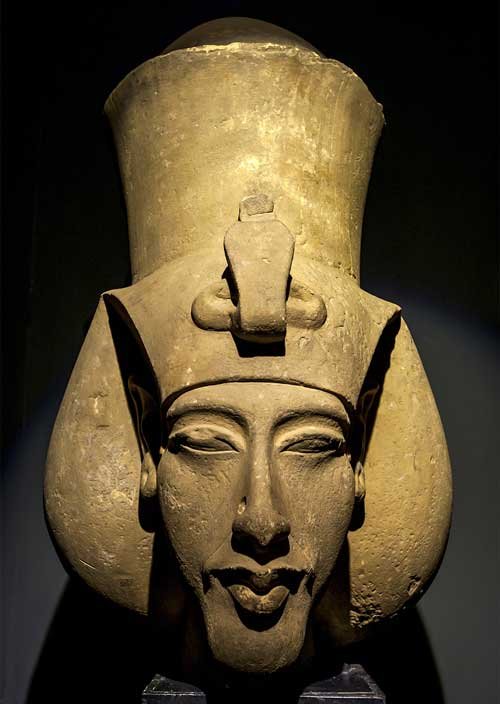
According to a Sunday Times report, in 2004, Albert Zink, The scientific director of the institute of Mummies and the Iceman in Italy used genetic fingerprints and tests on mitochondrial DNA, which is inherited only from its mother. The evidence determined that his mom was the sister of the previous pharaoh Ankhenaten, King Tut’s father – his mother was his father’s sister.
Despite all the findings of Tut scientists aren’t clear who is Tut’s real mother. Many believe that Nefertiti, also a wife of Ankhenaten can be Tut’s mother, but there is no way to find that. She is known as the “The Younger Lady,” in the technical language of Egyptian studies.
King Tut wasn’t the Only Child Ruler in History
Tut is widely known as the ‘boy king’ in pop culture that followed his discovery, he’s far from the only boy king in history. An Egyptian Pharaoh, Ptolemy XIII, took the throne at the age of 11 or 13 and went to war with Julius Caesar’s Rome that surrounded his sister, Cleopatra.
Short and Important Reign
While Tut’s reign as Pharaoh was short, around 8 or 9 years, it was also historically uneventful. The reign was marked by a few minor military campaigns against Egyptians nemesis the Hittites – Tut had no roles in the battles. But Tut was able to restore back the worship of Amun, who had been cast aside by his father in favor of the monotheistic cult of Aten. Tut also changed the capital of Egypt to Thebes from Amarna(also called “Ahkenaten’s City”). Tut also restored many palaces and temples that were destroyed.
King Tut Married At The Age Of Nine
Just after sitting on the throne, Tut married his half-sister, Ankhesenanmun(“One who lives through Amun.”) There is not much information about her – it is believed that she was older than Tut.
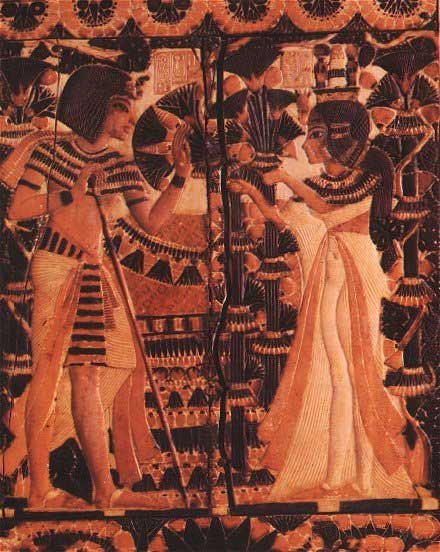
Ankhesenanmun was also the child of previous pharaoh Ankhenaten and quite possibly married to him, her mother was most likely the famous queen Nefertiti. Tut’s wife was certainly his half-sister, possibly his blood sister, or even his stepmother.
King Tut had two children, probably twin daughters
The tomb of Tut revealed two small coffins containing the mummified remains of two babies, neither of the babies appeared to have been born alive, the babies were probably twins. The DNA analysis confirmed that they were daughters of Tutakhamun and Ankhesenamun.
King Tut Might Have Died Of A Broken Leg
There are multiple theories about Tutankhamun’s death. Some believe he was murdered while some think he died of a disease. The reason for his death was first thought to be a blow to the head but a study in 2010 revealed that Tut probably died of a malarial infection acquired after he broke his leg.
While Tut’s broken bones led many experts to believe that he’d been crushed in some kind of chariot accident. But a virtual autopsy in 2014 didn’t suggest the same, because many of his bone breaks occurred after he died.
This might have happened during the embalming process in the early stages of his excavation. Its most unlikely that Tut would get in a chariot considering his physical abnormalities.
King Tut’s Successors Purged Him From The History
Tut was only nine when he sat on the throne, he needed some strong advisors to help him make all the decisions. For the task, Tut had two powerful deputies – Horemheb and Grand Vizier Ay. Horemheb was commander-in-chief for the Egyptian army and Grand Vizier At was a cavalry soldier turned counsel who is thought to have been the real power behind the throne.
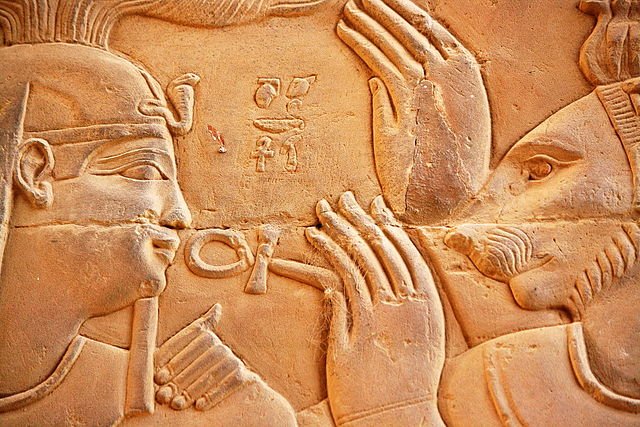
After Tut’s death, Vizier Ay reigned for four years as pharaoh before he died, he was then succeeded by Horemheb.
Although Ay continued with the reforms that Tut began, when Horemheb took the throne after Ay he began purging references to Aten, Ankhenaten, Tut, and Ay from history and architecture. All the monuments that referenced Aten or the kings were destroyed and the capital was moved again, from Thebes- to- Memphis. Tut himself was forgotten soon after his burial site was built over.
King Tut’s Tomb Was The Nearly Intact
The 1922 discovery by Howard Carter of Tutankhamun’s nearly intact Tomb received worldwide press coverage. Before Tut was entirely forgotten by history, due to Horemheb’s purge and the Tut’s reign didn’t last many years.
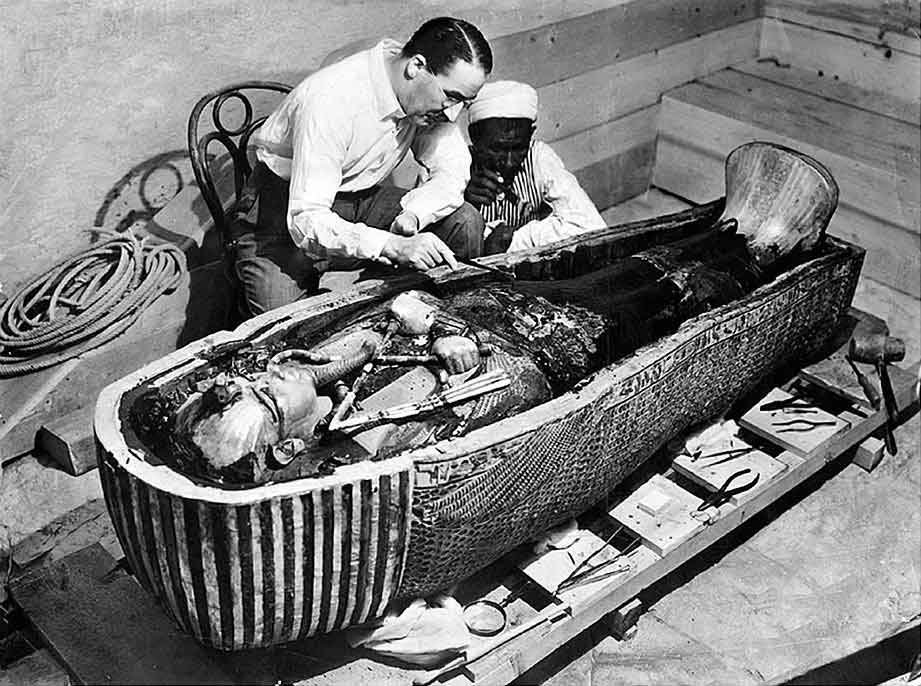
The tomb was unusually small considering his status. This might have happened because his death might have occurred unexpectedly, before the completion of a grander royal tomb, causing him to be buried in a tomb intended for someone else.
The tomb was robbed at least on two different occasions, but based on the items taken and the evidence of restoration of the tomb – the robberies most likely took place within several months of the initial burial.
The Curse of King Tut’s Tomb
The death of people involved in the discovery of Tutankhamun’s mummy has been popularly attributed to the curse of the pharaohs. Even a number of members of the Howard Carter’s team died within a few years of finding the tomb.

Later a study showed that of the 58 people who were present when the tomb was opened, only eight of them died within a dozen years. Among the deads, many were either older or in the professions that put them at risk.
Secret Chamber in King Tut’s Tomb
While scanning the tomb using infrared thermographic technology, scientists discovered that certain areas of the northern wall of the tomb differ in temperature from the rest of the space. A possible explanation might be that King Tut’s tomb had doorways that led to additional rooms.
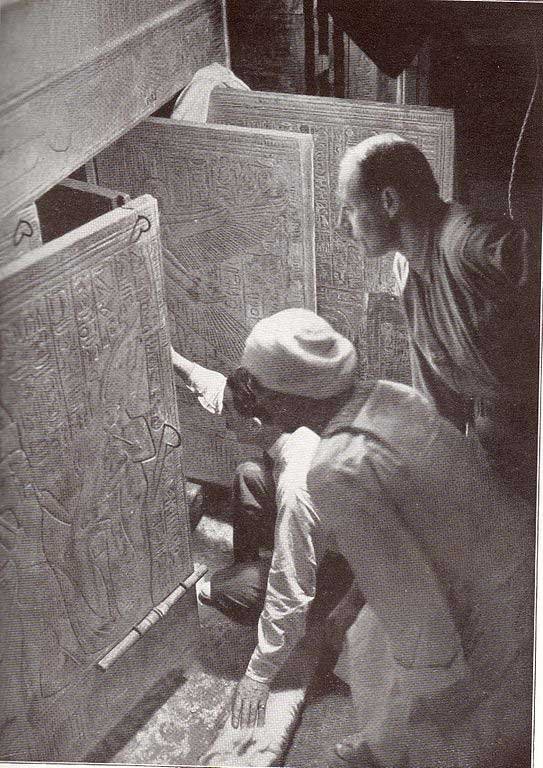
Archaeologist Nicholas Reeves in an interview with National Geographic said that one of these secret rooms may house Queen Nefertiti’s tomb. “It may have been hiding from us in plain sight.”
Additional scans and research in early 2016 revealed that these rooms actually contain organic materials. Whether or not a mummy lies behind the walls remain unknown.
Egypt Will Close Tut’s Tomb Permanently
The initial excavation of the tomb by Howard Carter and team damaged the tom and declared to exhibitions and tourist hordes began to erode the art and artifacts inside it. In 2014, Egypt opened a replica of the tomb, $700,000 suitable for visitors, and plans to permanently close the original.
King Tut’s Beard Snapped Off 3,300 Years Later
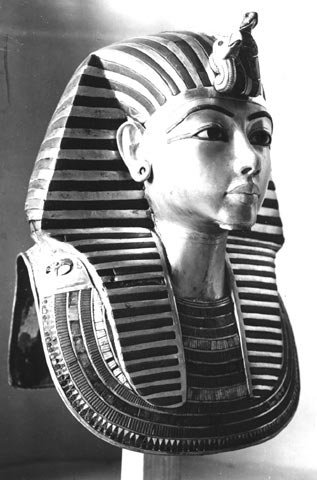
In 2004, an Egyptian museum employee accidentally knocked on the famous pharaonic beard of Tutankhamun’s mask. The team tried to fix the situation by gluing the beard back with epoxy but they scratched the mask’s gold surface in the process.




